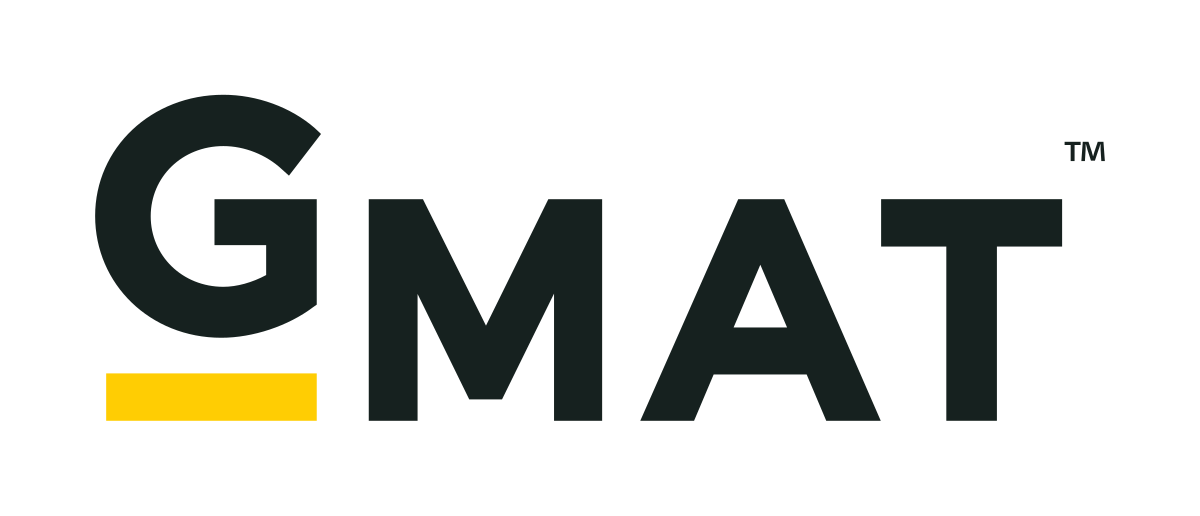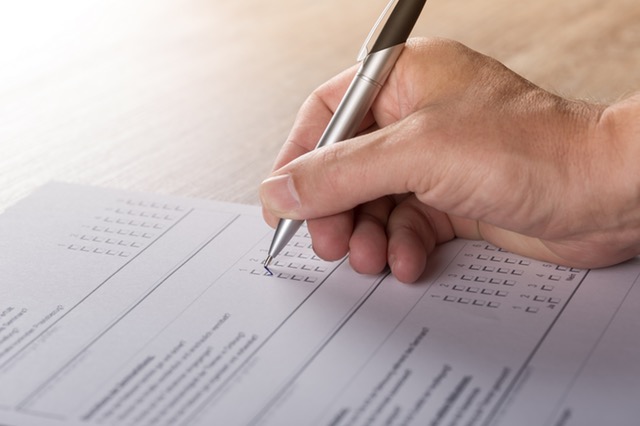Table of Contents
Are you preparing for the GMAT and feeling overwhelmed by the Quantitative Reasoning section? You're not alone. This crucial component of the exam often challenges test-takers, but with the right approach, you can boost your confidence and score. In this comprehensive guide, we'll break down the GMAT Quantitative Reasoning section, offering insights, strategies, and practical tips to help you excel.
GMAT Quantitative Syllabus

The GMAT Quantitative Reasoning section is designed to assess your logical reasoning and problem-solving abilities, which are crucial for success in graduate-level management programs. This section is divided into three primary components:
| Arithmetic | Algebra | Geometry |
|---|---|---|
| Number theory and systems | Permutation and combination | Lines and angles |
| Multiples and factors | Monomials and polynomials | triangles |
| fractions | GMAT Algebraic expressions and equations | quadrilaterals |
| decimals | functions | circles |
| Percentages | exponents | Rectangular solids and cylinders |
| Powers and roots | GMAT Arithmetic and geometric progressions | Coordinate GMAT Geometry |
| Profit an, compound and simple interest | Quadratic equations | - |
| Speed, time, and distance | Inequalities and basic statistics | - |
| Pipes, cisterns, and work time | - | - |
What's Tested on the GMAT Quantitative Section
1. Arithmetic: This involves basic mathematical operations like addition, subtraction, multiplication, and division. You'll also encounter questions related to percentages, ratios, and averages.
2. Algebra: Algebraic concepts are tested, such as solving equations and inequalities and working with algebraic expressions.
3. Geometry: Geometry questions assess your knowledge of shapes, angles, lines, and theorems. You may need to calculate areas, volumes, and angles.
4. Data Analysis: This part involves interpreting data presented in various forms, like charts, graphs, and tables. You'll need to draw conclusions and make calculations based on the data.
5. Word Problems: These questions are often presented in the form of real-world scenarios. You'll need to apply your math skills to solve practical problems.
6. Number Properties: Questions related to properties of integers, prime numbers, and factors can be part of this section.
7. Statistics: Basic statistics concepts, such as mean, median, mode, and standard deviation, may be tested.
8. Probability: You may encounter questions that involve probability calculations and scenarios.
Structure of the GMAT Quantitative Section
The GMAT quantitative reasoning section comprises two types of questions: problem-solving and data sufficiency. Problem-solving questions require you to solve mathematical problems using concepts such as algebra, geometry, arithmetic, and probability. Data sufficiency questions test your ability to analyze a problem systematically and determine whether there is enough information provided to solve it.
Each type of question has its own format. Problem-solving questions of GMAT syllabus are straightforward multiple-choice questions with five answer choices. Data sufficiency questions present a problem followed by two statements labelled (1) and (2). You must decide whether each statement alone or both together provides sufficient information to answer the question.

Problem-Solving Question Strategies
Data sufficiency and problem-solving questions are two of the most challenging types of questions that you will encounter on the GMAT. In this section, we will discuss some GMAT quant exam strategies that you can use to approach these types of questions effectively.
When tackling problem-solving questions in the GMAT Quantitative Reasoning section, it's helpful to keep a few strategies in mind:
1. Read the Question Carefully
Begin by understanding exactly what the question is asking. Sometimes, the key information is subtly hidden in the wording.
2. Identify Relevant Information
Look for the data and facts provided in the question. What do you need to solve the problem, and what is extraneous?
3. Plan Your Approach
Before diving into calculations, create a game plan. Decide on the most efficient method to solve the problem. Should you use algebra, arithmetic, or another approach?
4. Work Neatly and Organize
Keep your work neat and organized on scratch paper if allowed. This can help you avoid errors and see your progress clearly.
5. Estimation is Your Friend
In some cases, you don't need an exact answer. Estimating can save time and still lead to the correct answer.
6. Avoid Common Mistakes
Be cautious with units, negative numbers, and decimal points. Simple errors can trip you up.
7. Use the Answer Choices
Often, you can use the answer choices to your advantage. Plug them back into the problem to see if they make sense.
8. Stay Calm and Manage Time
Don't get stuck on a single question. If you're unsure, mark it for review and move on. Time management is crucial in this section.
Tips for Success on the GMAT Quantitative Reasoning

For many test-takers, the quantitative reasoning section of the GMAT can be a daunting prospect. However, with the right strategies and resources at your disposal, it is possible to excel in this area and boost your overall score.
Students must explore some tips and tools that can help them prepare effectively for the GMAT quantitative reasoning section.
1. Know the Format of the Test
Before diving into your preparation, it's important to have a clear understanding of what to expect on test day. The GMAT quantitative reasoning section consists of 31 multiple-choice questions that must be answered within 62 minutes. The questions are divided into two types: problem-solving (19-20 questions) and data sufficiency (11-12 questions). Understanding the format of the test will allow you to tailor your GMAT preparation accordingly.
2. Brush Up on Your Math Skills
The GMAT quantitative reasoning section tests a range of math concepts, including arithmetic, algebra, geometry, and data analysis. To perform well in this section, it's essential to have a solid grasp of these fundamental math skills. If you need to brush up on any particular area, there are plenty of online resources available that offer practice problems and tutorials.
3. Practice Time Management
Time management is crucial when taking any standardized test, but it's especially important for the GMAT quantitative reasoning section, where you'll have just over two minutes per question on average. One way to improve your time management skills is by taking practice tests under timed conditions and working on pacing yourself during each question.
4. Learn Strategies for Data Sufficiency Questions
Data sufficiency questions can be particularly tricky because they require you to determine whether or not a given set of data is sufficient to answer a particular question - rather than simply solving for an answer directly. To tackle these types of questions effectively, it's important to develop a systematic approach. One popular strategy is to use the process of elimination and work through each statement in turn.
5. Use Practice Materials
One of the best ways to prepare for the quantitative reasoning section is by using practice materials such as study guides, online courses, and practice tests. These resources can help you familiarize yourself with the test format, identify areas where you need improvement, and build your confidence ahead of test day.
GMAT Practice Questions for Quantitative Reasoning

GMAT (Graduate Management Admission Test) is a standardized test used by business schools around the world to assess applicants' readiness for graduate-level study in business and management. The test is conducted by GMAC (Graduate Management Admission Council).
The quantitative reasoning section of the GMAT measures your ability to analyze data and draw conclusions using mathematical skills. To help you prepare for this challenging exam, we have gathered some free sample practice questions for the quantitative reasoning GMAT.
Algebraic Equations
The algebraic equations section of the quantitative reasoning GMAT tests your ability to solve linear and quadratic equations, inequalities, and simultaneous equations. You will need to be able to manipulate variables and use algebraic formulas to solve these problems quickly and accurately.
Here's an example question:
If 2x + y = 8 and x - y = 4, what is the value of x?
To solve this equation, we can use substitution or elimination methods. By subtracting the second equation from the first one, we get:
2x + y - (x - y) = 8 - 4
X + 2y = 4
Then, by substituting x = y + 4 into either equation above:
2(y+4) + y = 8
3y = 0
Y=0
Therefore,
X-0=4
X=4
Geometry
The geometry section of the quantitative reasoning GMAT tests your ability to calculate areas, perimeters, volumes, angles, and other geometric properties of shapes such as circles, triangles, squares/rectangles/trapezoids/parallelograms/polygons etc.. You will need to be able to visualize two-dimensional and three-dimensional objects in space and apply basic geometric principles to solve problems quickly and accurately.
Here's an example question:
What is the area of a circle with a radius of 5 centimetres?
The formula for the area of a circle is A = πr^2, where r is the radius. Substituting r = 5 into this formula, we get:
A = π(5)^2
A = 25π square centimeters
Data Analysis
The data analysis section of the quantitative reasoning GMAT tests your ability to interpret and analyze data presented in tables, graphs, charts, and other visual representations. You will need to be able to identify trends, patterns, and relationships between variables and draw conclusions based on this information.
Here's an example question:
If a company's revenue increased by 20% from year 1 to year 2 and then decreased by 10% from year 2 to year 3, what was the net change in revenue from year 1 to year 3?
To solve this problem, we can use percentage change formulas. Let R1 be the revenue in year 1.
Revenue in year 2: R2 = R1 + (20/100)R1 = (120/100)R1
Revenue in year 3: R3 = R2 - (10/100)R2 = (90/100)(120/100)R1
Therefore,
Net change from year 1 to year 3:
R3 - R1= ((90/100)(120/100)-1)
R1=0.08R₁.
What is The Importance of GMAT Exam?
Related Blog:
- GMAT Quant Syllabus
- GMAT Verbal Questions
- GMAT Verbal Reasoning
- Analytical Writing Assessment GMAT examples
Conclusion
There you have it – your guide to conquering the GMAT Quantitative Reasoning section! Remember, this isn't about being a math genius. It's about practice, strategy, and keeping your cool under pressure. Don't get discouraged if you struggle at first. Everyone does! Keep at it, use the tips we've shared, and you'll see improvement. Believe in yourself, stay focused, and before you know it, you'll be tackling those quant questions like a pro. You've got this! Now, take a deep breath and get back to your prep. Your dream score is waiting for you!






